Email marketing remains one of the most effective channels for businesses to engage with customers and drive sales. However, choosing the right email marketing platform is crucial to get results.
Mailchimp and Squarespace Email Campaigns are two popular options to consider. Both email marketing platforms enable you to create professional email campaigns, manage subscriber lists, track results, and integrate with your website and other tools. However, they have key differences across factors like features, ease of use, pricing, and performance.
In this Mailchimp vs Squarespace Email Marketing, we will compare the platforms across different categories like market position, ease of use, design customization, functionality, customer support, pricing, and more to help you choose the best email marketing platform for you.
1. Understanding the Basics
Mailchimp was founded in 2001 by Ben Chestnut and Dan Kurzius. It has become one of the most popular email marketing platforms, used by over 14 million businesses worldwide. Mailchimp has established itself as an industry leader, commanding an estimated 50% of the global email marketing market share.
Squarespace entered the email marketing space later, in 2018. Founded in 2003 by Anthony Casalena, Squarespace is most well-known as a website builder. The company has gained popularity for its all-in-one solution combining website building, e-commerce, and marketing tools like email campaigns. Squarespace has an estimated 3.1% global email marketing market share.
Mailchimp has established Facebook groups like the Mailchimp Users group where users discuss tactics and get advice. Squarespace has a page with over 376K likes where users can get community support.
2. Features and Functionality
Automation
Mailchimp
Mailchimp offers a visual drag-and-drop automation builder to set up automated email workflows. You can trigger emails based on user actions like opening an email, clicking a link, or visiting a certain page on your site.
Pre-built automation is available for common workflows like welcome sequences, abandoned carts, and re-engagement. Advanced options include if/then logic, grouping contacts, scheduling delays, and adding tags or removing subscribers from a workflow.
The automation builder makes it easy to set up multi-step sequences with a simple visual interface. You can also build automated post-purchase and lifecycle-based sequences to nurture contacts over time. Reports within automation show contacts entering and exiting each step so you can optimize performance. Overall, Mailchimp provides robust automation features perfect for beginners or advanced users.
Squarespace
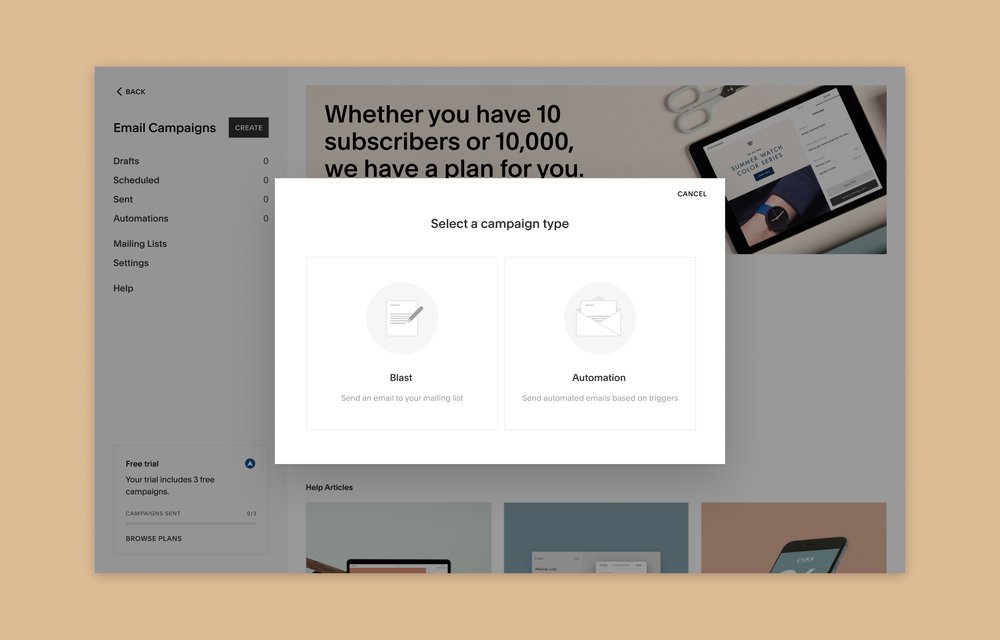
Squarespace has an automation builder to create sequences triggered by actions like sign-ups, purchases, or content updates. You can set delays, branch based on conditions, and add/remove tags within sequences.
It also includes if/then logic and filters to target automation. Pre-made workflows are available for common needs like post-purchase follow-up. Squarespace automations are easy to set up for beginners, with a simple drag-and-drop workflow builder.
However, advanced users may find options limited compared to Mailchimp – there are fewer segmentation options and less flexibility to create elaborate multi-step workflows.
You also cannot trigger automations directly based on email engagement like opens or clicks. But core automation functionality works well out of the box.
Winner: Mailchimp
Mailchimp is the winner for its wider range of triggers, more advanced automation features including segmentation, and greater flexibility for complex multi-step automation. In comparison, Squarespaceis a simple email marketing tool, but both platforms make it easy to set up basic sequences without coding. But Mailchimp provides more customization for sophisticated automation tailored to your audience. Its lead scoring and segmentation features enable highly targeted, personalized sequences.
Email Templates
Mailchimp
Mailchimp offers hundreds of professionally designed email templates that are mobile-optimized and easy to customize. Templates are available for different campaign types like welcome series, promotions, newsletters, and more. You can browse by industry to find templates tailored to businesses like retail, publishing, non-profits, etc.
The template editor makes it easy to swap images, edit text, and modify colors and fonts without coding. You can also create new sections like columns, images, buttons, and dividers by dragging and dropping.
Advanced custom CSS/HTML editing is available for greater design control. Overall, Mailchimp templates provide excellent variety, mobile responsiveness, and intuitive customization tools.
Squarespace

Squarespace has professionally designed templates for different campaign types like announcements, newsletters, promotions, etc. The template variety is more limited compared to Mailchimp but covers essential use cases. You can browse by category like e-commerce, events, galleries, and more.
The simple editor allows swapping images, editing text, and modifying colors. But customization feels more constrained compared to Mailchimp – you cannot freely drag/drop new elements like images or buttons. The ability to edit HTML/CSS code is also lacking. On the plus side, templates are mobile-optimized out-of-the-box. However, the selection and editing flexibility is more limited than Mailchimp.
Winner: Mailchimp
Mailchimp is one of the best email marketing tools and wins for email templates thanks to its vast library with designs tailored to every industry and use case. The drag-and-drop editor also makes it very easy to customize templates without coding knowledge. Squarespace templates are professional but more constrained in selection and editability. For the best variety, mobile responsiveness, and customization control, Mailchimp is the winner.
Segmentation
Mailchimp
Mailchimp provides powerful segmentation options to group contacts based on profile data, purchase history, past email activity, and more. You can create static or dynamic segments using filters and combine multiple conditions to target specific groups. Tags can also be used to manually segment users.
Detailed segmentation reports show the number of subscribers matching each condition and let you see segment overlap. Segments can be used to target email campaigns, personalize content, assign customer journeys, and more. Overall, Mailchimp has excellent flexibility for both basic and advanced audience segmentation.
Squarespace

Squarespace enables segmenting your list based on customer properties like location, order history, tags, and signup date. You can target campaigns to static segments. Dynamic smart segments can also be created based on customer profile data that updates automatically.
However, segmentation options are not as robust as Mailchimp. There is no visual segment builder and you cannot combine multiple filter conditions. The segmentation is also limited for use only in email targeting, versus Mailchimp allowing segments across channels. Reporting on segments is lacking compared to Mailchimp as well.
Winner: Mailchimp
Mailchimp wins for its powerful segmentation capabilities that help marketers send targeted, personalized messaging. The intuitive segment builder makes it easy to combine multiple filters for advanced audience targeting. Robust reporting provides insight into different segments. Overall Mailchimp is the winner for flexibility to create highly customized segments across channels.
Analytics
Mailchimp
Mailchimp provides powerful analytics to track and optimize your email campaigns. You can view reports on opens, clicks, unsubscribes, spam complaints, and more. It also tracks popular links, most engaged recipients, and campaign ROI data.
Campaign reports let you segment data by factors like location, device, and other audience traits to gain more insights.
A/B test reports compare different campaign variants. Automation workflow reports show contacts entering and exiting each step. Mailchimp integrates with Google Analytics for deeper analysis. Overall, Mailchimp has excellent campaign analytics and segmentation capabilities.
Squarespace
Squarespace offers basic campaign reporting on opens, clicks, unsubscribes, and spam reports. You can segment results by factors like location, device, and campaign type. However, analytics capabilities are not as robust as Mailchimp. There is no A/B testing or integration with Google Analytics. Workflow automation analytics are also lacking.
The campaign reports cover essential metrics but lacks more advanced options for segmentation and testing available with Mailchimp. There is also no ROI tracking or popular link analysis. For simple campaign reporting, Squarespace provides the basics. But for deeper optimization, Mailchimp is better.
Winner: Mailchimp
Mailchimp wins for its powerful email analytics that helps marketers track performance and optimize future campaigns. Robust segmentation options provide deeper insights into your audience. A/B testing and Google Analytics integration also allow advanced analysis. For in-depth analytics to boost email success, Mailchimp is the winner.
Unique Features
Mailchimp
Mailchimp offers some unique features that set it apart:
- Landing pages – Build unlimited landing pages and connect them to campaigns. Use drag-and-drop design and integrate it with your website.
- Surveys – Create surveys to capture subscriber feedback and data. Embed in emails or webpages.
- Postcards – Print and mail customized postcards to subscriber addresses.
- Facebook & Instagram ad management – Manage Facebook and Instagram ads directly within Mailchimp.
- WooCommerce integration – Deep integration with the WooCommerce e-commerce platform.
Squarespace

Some of Squarespace’s standout features include:
- Website Integration – Seamless integration as part of the Squarespace web builder and content management system.
- Donation Campaigns – Email campaigns specific for nonprofits to fundraise donations.
- RSVP Management – Collect RSVPs to events and automatically trigger emails to attendees.
- Forms – Embed email-collecting forms across your website.
- Audience Sync – Sync email subscriber activity with your website analytics.
Winner: Tie
Both Mailchimp and Squarespace offer unique features that help them stand out. Mailchimp excels at expanded offerings like landing pages, surveys, and Facebook ad management. Squarespace’s deep website and CRM integration provide unified data and experiences. There is no clear winner – the “best” depends on your specific business needs.
3. Ease of Use
Mailchimp

Mailchimp has a clean, intuitive user interface that is easy for beginners to navigate. The dashboard provides quick access to your campaigns, lists, reports, and automations. Drag-and-drop campaign builders make it simple to create emails, landing pages, postcards, and more.
The platform is designed with the non-technical user in mind. Learning is guided by tips, prompts, and contextual help content. Automation and email templates allow you to execute sophisticated campaigns without advanced skills. The reports provide data visualization to easily track performance. Overall, Mailchimp is praised for its usability and gentle learning curve.
Squarespace

Squarespace also has an intuitive interface that is straightforward for beginners. The home dashboard surfaces key information on campaigns, contacts, and reports. Email campaigns can be created via simple point-and-click editors without the technical skills needed.
However, some areas feel less polished than Mailchimp – automation workflows and reports provide less guidance for new users. The email customization options are also more constrained compared to Mailchimp. While Squarespace is easy to get started with, the onboarding is not as robust as Mailchimp’s guided approach.
Winner: Mailchimp
Mailchimp wins for ease of use thanks to its very intuitive interface optimized for simplicity. The platform provides prompts, tips, and tutorials throughout to guide new users. Powerful features like templates and automation minimize the learning curve. Squarespace is also usable for beginners but lacks Mailchimp’s polished experience across all features.
4. Email Deliverability
Mailchimp
Mailchimp has excellent email deliverability thanks to advanced algorithms and partnerships with major ISPs. It maintains sender reputation scores of 90+ with top inbox providers. Mailchimp constantly monitors bounce rates, spam complaints, and other metrics to optimize deliverability.
Features like link analysis, image proxying, and spam filter testing help avoid red flags prior to sending. Mailchimp also allows granular disabling of options like open tracking and link wrapping to accommodate stringent inboxes. Dedicated IP addresses are available for advanced senders. Overall, Mailchimp leads in email deliverability and inbox placement.
Squarespace
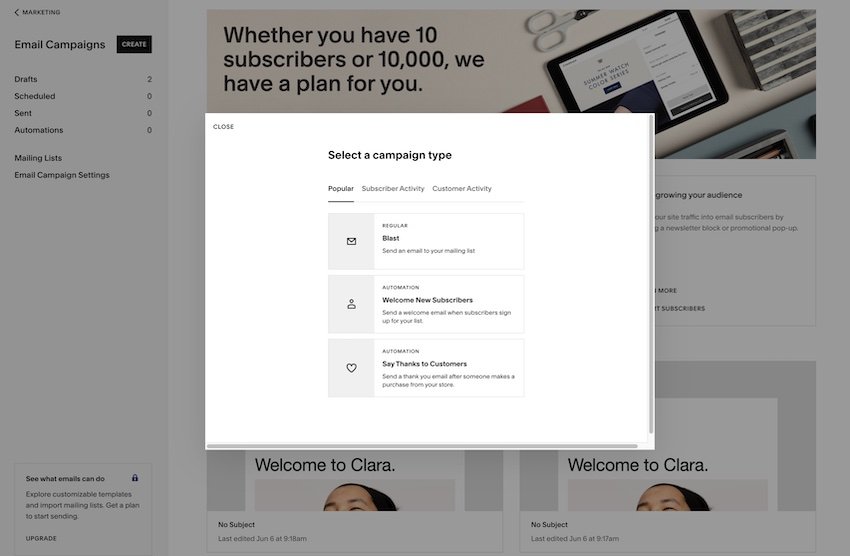
Squarespace says their email delivery metrics meet or exceed industry standards but do not provide as much transparency into inbox provider scores. They offer recommended practices to improve deliverability like permission-based signup and re-engaging inactive subscribers.
However, Squarespace lacks some of Mailchimp’s advanced deliverability features and monitoring capabilities. There are fewer options to customize campaigns to accommodate strict inboxes. Shared IPs rather than dedicated IPs could also limit deliverability for high-volume senders. The focus is more on core best practices versus optimized algorithms and partnerships.
Winner: Mailchimp
Mailchimp wins for superior email deliverability resulting in higher inbox placement rates. The advanced algorithms, monitoring capabilities, and customization options give it an edge, especially for commercial senders. Squarespace follows email best practices but cannot match Mailchimp’s optimized deliverability infrastructure.
5. Customer Support and Community
Mailchimp

Mailchimp provides 24/7 customer support via live chat, phone, and email. Support representatives are generally knowledgeable and helpful. The platform also offers an extensive knowledge base, tutorials, webinars, and chatbots for self-service help.
Active online communities provide peer-to-peer support and advice. Mailchimp also hosts local Meetup groups and a yearly conference called Mailchimp Presents.
Squarespace
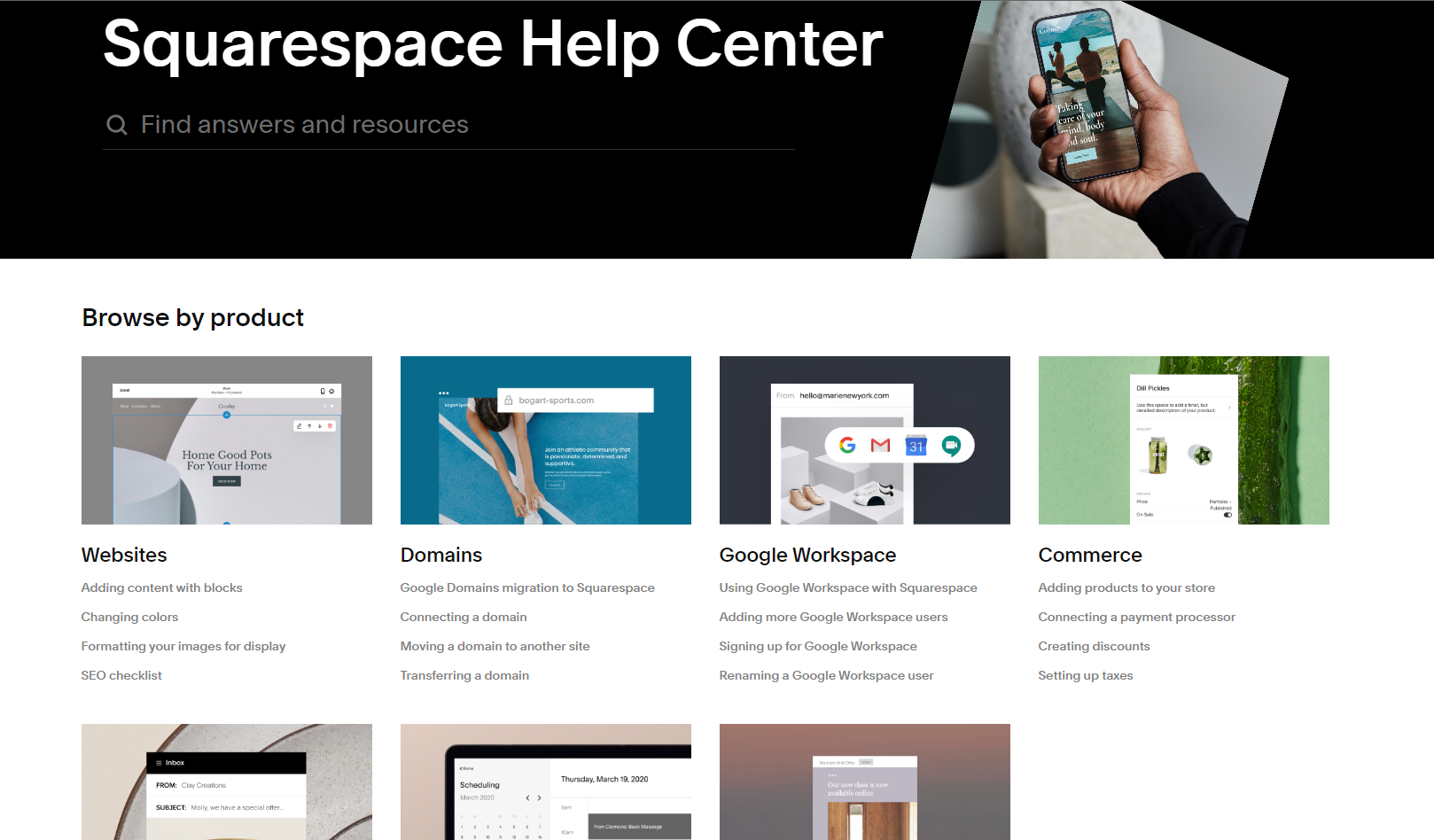
Squarespace offers 24/7 customer support through live chat and their help desk. Phone support is also available during business hours. The knowledge base provides useful self-help articles and guides.
For community support, the Squarespace forum allows users to post questions and engage in discussions. The Facebook group is also popular. However, Squarespace’s community resources are not as robust as Mailchimp’s.
Winner: Mailchimp
Mailchimp wins when it comes to customer support and community, thanks to its stellar 24/7 assistance and wealth of self-help content. The vibrant community fostered by Mailchimp, with conference events and local Meetups, is more engaging than Squarespace’s forums and groups. For the best user support and ability to connect with peers, Mailchimp comes out ahead.
6. Integrations
Mailchimp
Mailchimp integrates with hundreds of third-party apps and services through its API and Zapier partnership. Key integrations include major CRMs, e-commerce platforms, social media sites, productivity tools, and payment processors.
Some examples of popular integrations include:
- CRM: Salesforce, HubSpot, Zoho CRM, Insightly
- E-commerce: Shopify, WooCommerce, Magento, BigCommerce
- Social Media: Facebook, Instagram, Twitter, LinkedIn
- Productivity: G Suite, Slack, Trello
- Payments: PayPal, Stripe, Square
Mailchimp makes it easy to connect your marketing campaigns with other business systems for unified data and smoother workflows.
Squarespace

Squarespace integrates with a smaller set of third-party platforms compared to Mailchimp but covers key needs:
- CRM: Salesforce, HubSpot, Zapier
- Social media: Facebook, Instagram, Twitter
- Productivity: Google Workspace, Slack
- Payments: Stripe, PayPal
If you write a blog post, you can use the direct RSS integration to send it to your email subscribers. However, the platform lacks direct integrations with major e-commerce platforms like Shopify or WooCommerce. The integration options focus on syncing Squarespace email with sales and social channels versus connecting diverse martech systems.
Winner: Mailchimp
The Squarespace Mailchimp shows that Mailchimp is the winner for its vast integration ecosystem that bridges major CRM, commerce, social, productivity, and payment tools. This makes Mailchimp a connectivity hub for business systems that make it easy to run successful email marketing campaigns. Squarespace has key integrations with sites like Salesforce and Slack but a narrower scope focused on its platform.
7. Pricing
Mailchimp
Mailchimp has 3 pricing tiers:
- Free – Up to 2,000 subscribers and 12,000 emails/month
- Essentials – $13/month billed annually for up to 500 contacts
- Standard – $20/month billed annually for up to 2,500 contacts
- Premium – $350/month billed annually for up to 10,000 contacts
Add-ons like additional email sends, domain authentication and SMS credits cost extra.
The plans include automation, landing pages, reports, CRM integrations, and other features. Mailchimp’s free plan has a generous allowance for getting started. Paid plans offer strong value for growing email lists.
Squarespace

Squarespace does not offer a permanently free plan, but they provide a free 14-day trial. Paid plans start at the $16/month Personal plan which allows up to 500 subscribers. The $23/month Business plan supports unlimited contacts and campaigns. Non-profits can get 25% off subscriptions.
For high-volume needs, custom enterprise pricing is available on request. Squarespace can also bundle email marketing with their web hosting and online store packages. Pricing is competitive, especially for users already on Squarespace web hosting.
Winner: Tie
For smaller lists, Mailchimp has more generosity in features for free accounts. But at higher volumes, Squarespace can be more affordable. Custom enterprise pricing gives big spenders the flexibility to get bundled deals across Squarespace products. For high value and flexibility, it’s a tie on pricing.
8. Reviews and Reputation
Mailchimp
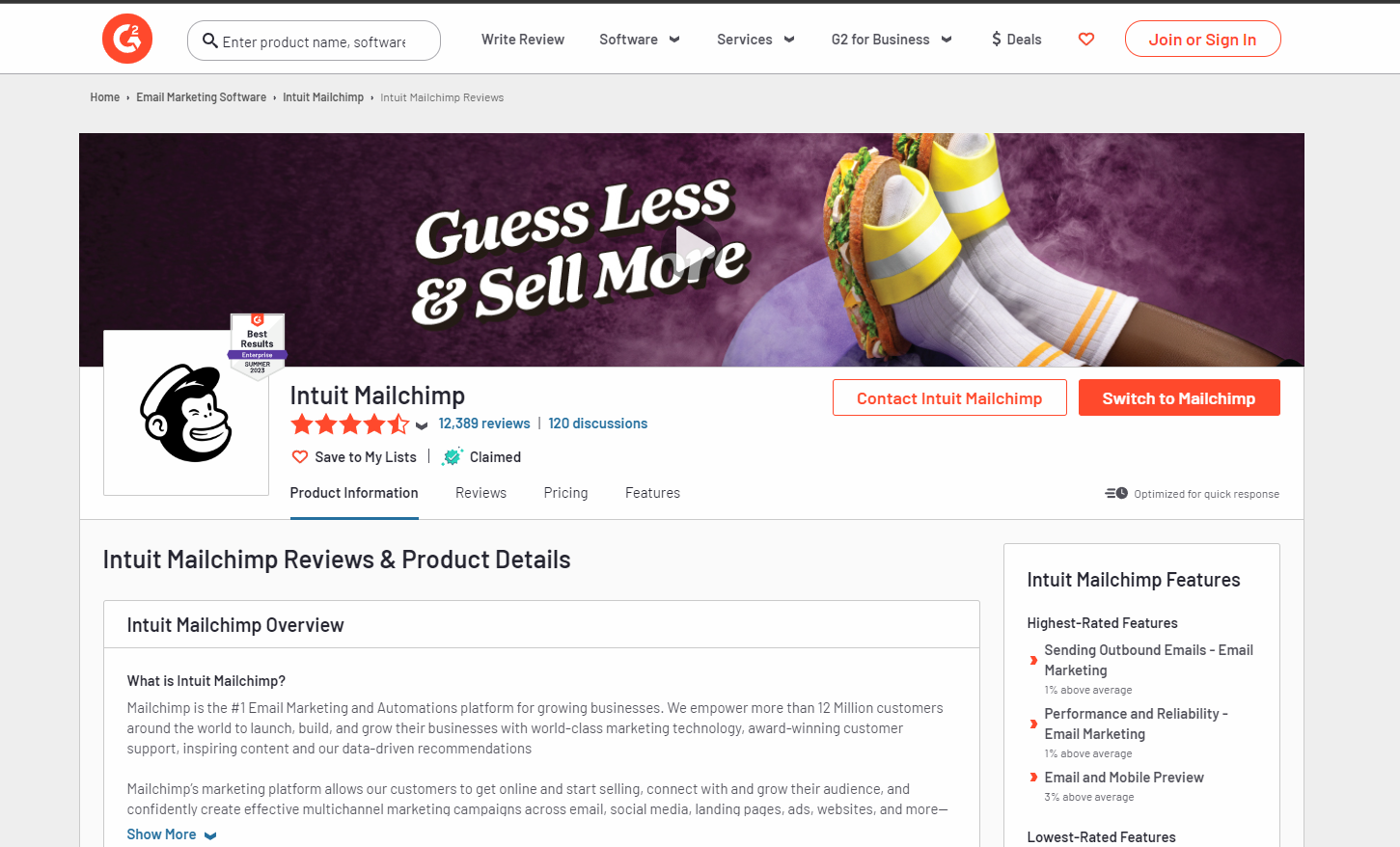
Mailchimp earns strong reviews for its ease of use, templates, and automation features. Users praise the intuitive drag-and-drop interface that makes email creation accessible for non-technical users. Reviews on G2 highlight the platform as a leader in the email marketing space.
Some cons mentioned about this email marketing service include the lack of native ecommerce features. Complex segmentation and reporting abilities also have a learning curve for beginners. However, most reviews agree that Mailchimp balances power and simplicity better than competitors.
Squarespace
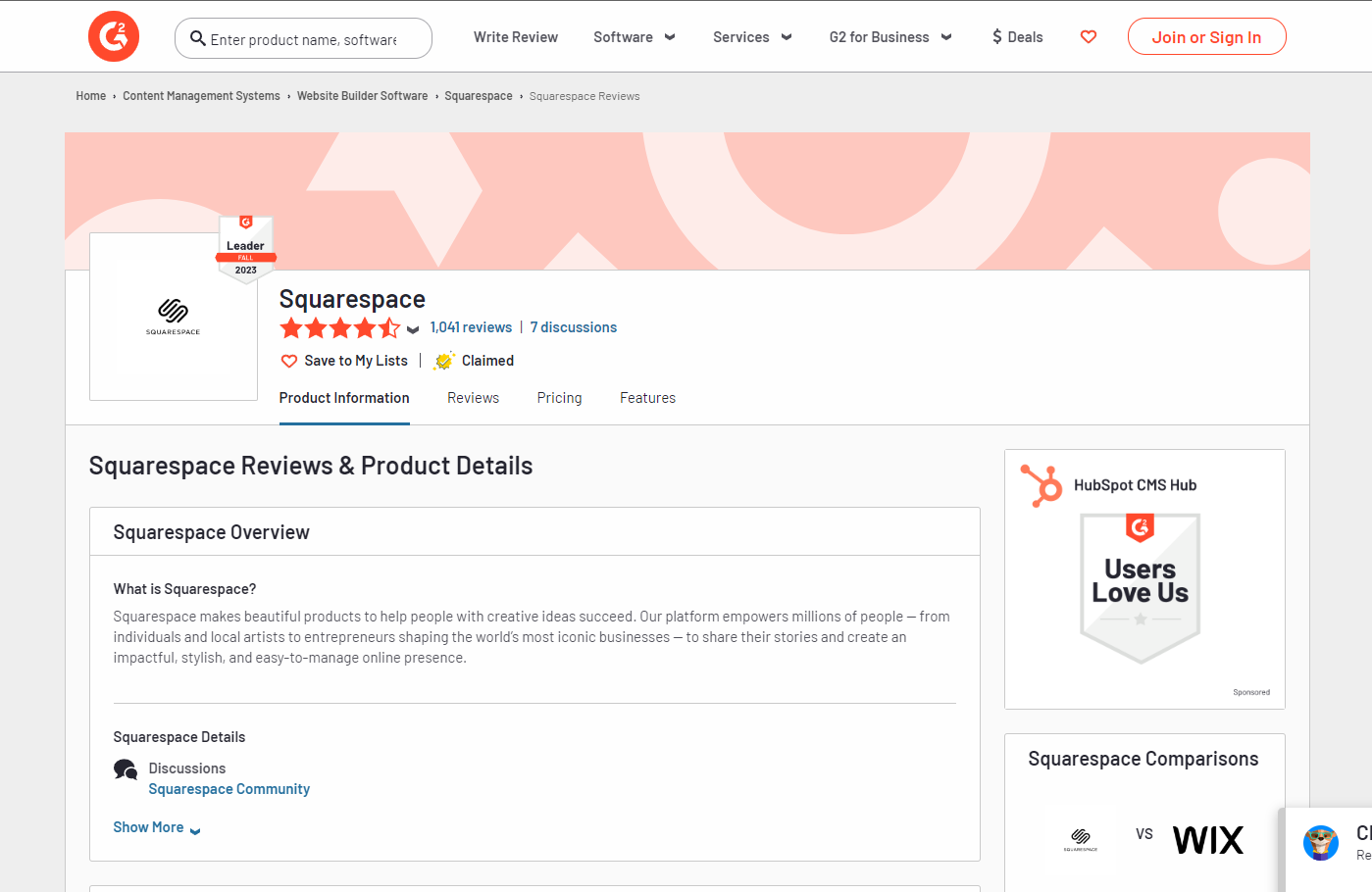
Squarespace garners positive feedback for its simple email campaign creation paired with beautiful designer templates. G2 reviews praise the seamless integration with Squarespace’s web builder. Users mention reliably good deliverability as well.
However, some users feel core functionality is too basic. The lack of segmentation, complex automation, and in-depth analytics limits more advanced email marketers. But for simple drip campaigns and newsletters, reviewers find Squarespace Email Campaigns get the job done.
Winner: Mailchimp
The verdict from users on sites like G2 is that Mailchimp is the leader in email marketing and earns its reputation through ease of use plus powerful features. Squarespace works well for basic email needs but falls short on more sophisticated capabilities compared to Mailchimp. When it comes to reviews and reputation, Mailchimp comes out on top.
9. FAQ’s
Mailchimp FAQs
- What types of email campaigns can I create in Mailchimp?
Mailchimp allows you to create various types of email campaigns like welcome sequences, newsletters, promotions, digests, segmented messages, post-purchase follow-ups, event reminders, and more. - Can I integrate Mailchimp with my CRM or e-commerce site?
Yes, Mailchimp offers integrations with all major CRM, e-commerce, and other marketing platforms through its API and partner connections. - Does Mailchimp have email templates?
Mailchimp provides hundreds of professionally designed, mobile-optimized email templates across industries and campaign types that you can customize. - Is there a limit to subscriber list size on Mailchimp?
The premium plan supports unlimited contacts and emails. Lower tiers have subscriber limits ranging from 500 to 100,000 contacts.
Squarespace Email Campaigns FAQs
- What types of emails can I send with Squarespace?
You can create announcements, newsletters, promotions, welcome emails, post-purchase follow-ups, and other basic drip campaigns. - Does Squarespace integrate with CRMs or marketing tools?
Yes, Squarespace offers integrations with select platforms like Salesforce, HubSpot, Mailchimp, and Zapier. But its ecosystem is smaller than Mailchimp’s. - Are there pre-designed email templates?
Squarespace has professionally designed templates for common campaign types and industries that you can customize. However, the selection is more limited compared to Mailchimp. - Is Squarespace’s deliverability as good as dedicated providers?
Squarespace meets general email deliverability standards but lacks some of the sophisticated optimization features of Mailchimp, which specializes in email marketing.
Final Thoughts
Choose Mailchimp if…
You want a full-featured email marketing platform with powerful segmentation, automation, and analytics. Mailchimp is the leader in the industry for a reason – it enables sophisticated campaigns while still being easy to use for beginners. The breadth of integrations makes Mailchimp a central hub for your marketing stack. The generous free tier and affordable scaling pricing also make it accessible.
Overall, Mailchimp is a great choice for small businesses wanting to take their email marketing to the next level with room to grow. The platform can scale to support the needs of larger companies as well.
You may also be interested in checking out some Mailchimp alternatives to help with the evaluation process.
Choose Squarespace if…
You want seamless email integrated with your Squarespace website and online store. Squarespace’s templates ensure your emails match your brand aesthetic. The platform enables easy creation of basic newsletters and promotions that complement your web presence.
Squarespace Email Campaigns is ideal for solopreneurs, creative professionals, and other small website owners who want beautiful emails without complexity. For more advanced needs, Mailchimp is likely the better choice. But Squarespace delivers a simple yet powerful email option tied to your broader web toolkit.
